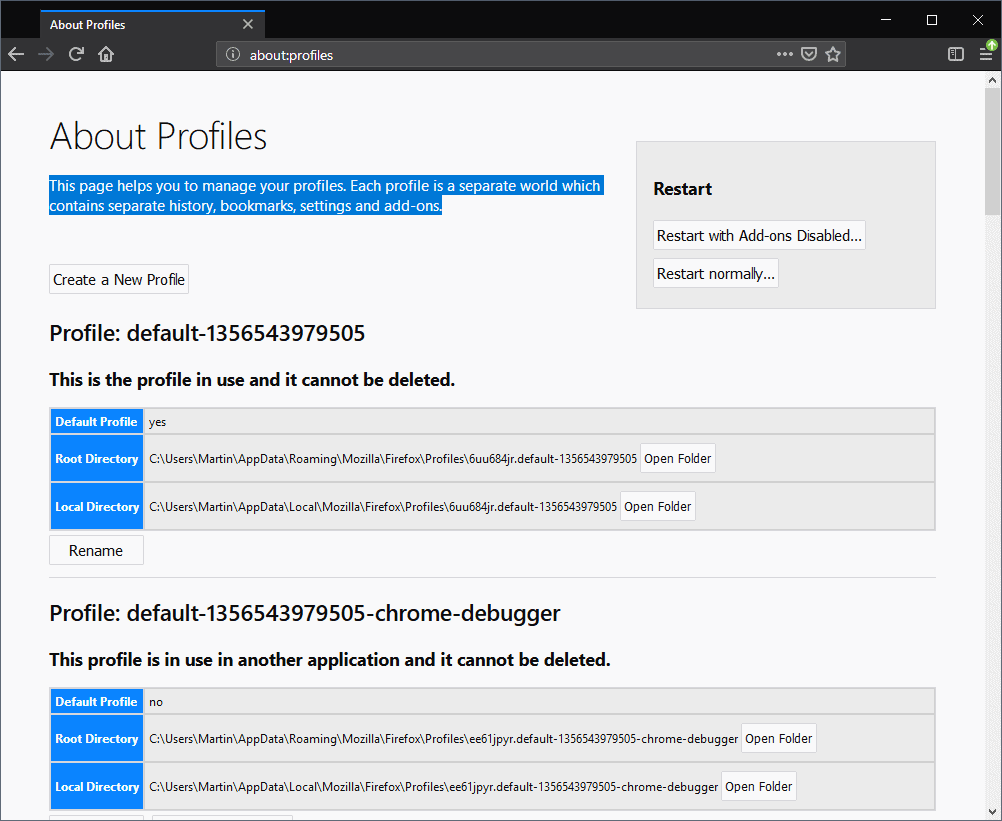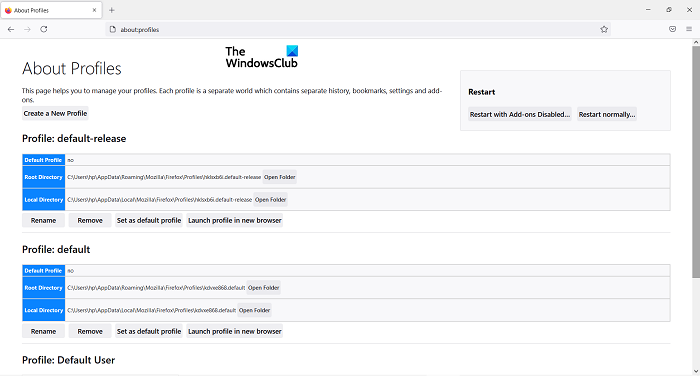
- FIREFOX PROFILE MANAGER RUN COMMAND HOW TO
- FIREFOX PROFILE MANAGER RUN COMMAND INSTALL
- FIREFOX PROFILE MANAGER RUN COMMAND WINDOWS
In general, the syntax is as follows:Īpplication -option -option "argument" -option argument Multiple command line options can be specified. In some cases, option arguments must be enclosed in quotation marks (this is noted in the option descriptions below). Some options have abbreviations, for example, -editor can be abbreviated as -edit (available abbreviations are described in the text below). If the option contains arguments, enter the argument after the option. Blank spaces ( ) separate commands and parameters.Ĭommand line options follow the command to start the application.Command parameters, except profile names, are case insensitive.Command parameters containing spaces must be enclosed in quotes, such as "Joel User".You can open the command line interface by pressing Shift+F2.īut first, let's describe the syntax rules that apply for all options.
FIREFOX PROFILE MANAGER RUN COMMAND HOW TO
This page describes the commonly used options and how to use them. You can also control how Mozilla applications open, which components open initially, and what the components do when they open. For example, if you have multiple profiles you can use command line configuration options to bypass the Profile Manager and open a specific profile.
FIREFOX PROFILE MANAGER RUN COMMAND INSTALL
will show you how to install FoxyProxy Firefox plugin. Now you need to run the individual profiles and install the in each of them. Once you have set up the profiles you need, you’re almost good to go. Install the FoxyProxy addon in each profile Uncheck the box that says Use the selected profile without asking at startup to prevent Firefox from using the selected profile automatically. Give the profile any name you want Repeat the steps above for every profile that you need to create.ģ. Click Create Profile, this will start the Create Profile WizardĢ. On Linux: Open a terminal and run the firefox -P commandĪfter starting the Profile Manager, do the following to create a new profile:ġ. Type /Applications/Firefox.app/Contents/MacOS/firefox-bin -profilemanager into the Terminal and press Enter On Mac: Open a Terminal window - press Command+Space, type Terminal, and press Enter to do it from Spotlight.
FIREFOX PROFILE MANAGER RUN COMMAND WINDOWS
On Windows:, Press Windows Key + R, type firefox.exe -p into the Run dialog that appears, and press Enter Starting the Profile Manager Importantīefore starting the Profile Manager, make sure that Firefox is completely closed. The Profile Manager is not visible in the Firefox User Interface, running it will require typing commands into a terminal or using the Run Dialog for Windows.

It is possible to take advantage of the Firefox Profiles feature in order to run multiple independent instances of the browser, each connecting to a different proxy. The Profile Manager allows you to create, remove, rename, and switch profiles.

You can have multiple Firefox profiles, each containing a separate set of user information. Firefox saves your personal information such as bookmarks, addons, passwords, and user preferences in a set of files called your profile, which is stored in a separate location from the Firefox program files.


 0 kommentar(er)
0 kommentar(er)
